November 2017
By Jon Wolfsthal
President Donald Trump has made a number of sometimes contradictory comments related to nuclear weapons during his political campaign and since his election.
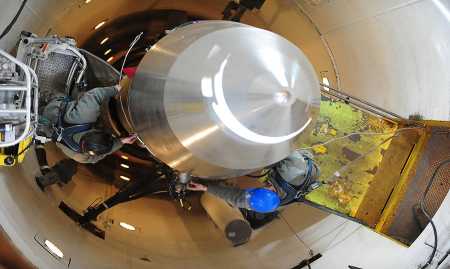 He said he would be the “last to use” nuclear weapons,1 yet implied first use when he said North Korean threats “will be met with fire and fury like the world has never seen” should it threaten the United States or its allies.2 As a candidate, he described the U.S. nuclear arsenal as being in “very terrible shape,”3 while on August 9, 2017, after six months in office and no changes to U.S. nuclear forces, he tweeted that the nuclear arsenal “is now far stronger and more powerful than ever before.”
He said he would be the “last to use” nuclear weapons,1 yet implied first use when he said North Korean threats “will be met with fire and fury like the world has never seen” should it threaten the United States or its allies.2 As a candidate, he described the U.S. nuclear arsenal as being in “very terrible shape,”3 while on August 9, 2017, after six months in office and no changes to U.S. nuclear forces, he tweeted that the nuclear arsenal “is now far stronger and more powerful than ever before.”
Most recently, Trump denied an NBC News report that he told his national security advisers during a July meeting that he wanted what would amount to a tenfold increase in the number of U.S. nuclear weapons, returning to Cold War levels.4 “I want modernization and I want total rehabilitation” so the current arsenal is “in tip-top shape,”5 he told reporters October 11 at the White House, suggesting he will continue or accelerate the nuclear stockpile management program begun during the previous administration.
All that has created some uncertainty about how U.S. nuclear policies will change with a new administration led by a president who took office without experience in foreign policy or strategic thinking, let alone the complexities of nuclear weapons and deterrence. How his views and the changing strategic environment may alter the direction of U.S. nuclear policy will become clearer when the Department of Defense completes its Nuclear Posture Review (NPR), expected late this year or in early 2018.
Posture reviews have been completed by three presidents since 1994 and have proven to be consequential documents. Much of the work and details behind the policies are classified, although it is expected that an unclassified NPR Report will be made public, affecting how the United States, its president, and its nuclear capabilities are seen by allies and adversaries alike. More importantly, the review establishes a guide for decisions that underpin the management, maintenance, and modernization of the nuclear arsenal and influences how Congress views and funds the nuclear forces.
Context Matters
One critical element of past nuclear posture reviews and likely this one as well is context. The first, completed under President Bill Clinton, was needed to define the purpose and possible role of nuclear weapons in the wake of the Soviet Union’s collapse. The resulting “lead but hedge” strategy provided a continuing rationale for nuclear weapons and sought to preserve capabilities against a future Russian threat.
The George W. Bush administration was seized with the challenge of addressing proliferation by countries such as North Korea and Iran and focused on the inability of the United States to hold deep underground targets at risk. This led to the pursuit of new nuclear capabilities, such as the Robust Nuclear Earth Penetrator, that implied use as a battlefield weapon, not just a deterrent against attack on the United States or its allies. When combined with the global war on terrorism and the reliance on using U.S. military forces for regime change, the Bush administration was seen as much more reliant on nuclear weapons than the actual policy record reflects.
President Barack Obama came into office at a time when the United States was seen internationally as a threat to the global nonproliferation and disarmament regime it had helped over decades to create and support. The previous administration’s false weapons of mass destruction (WMD) justification for the invasion of Iraq, Bush’s pursuit of the earth-penetrating warhead and a series of new “reliable replacement warheads” and that adminstration’s broader pursuit of regime change as a nonproliferation tool had reduced the credibility of the United States as a nonproliferation leader and a responsible nuclear-weapon state. This perception was part of the context for Obama’s NPR. He and his national security team saw restoring U.S. leadership of the global nonproliferation and disarmament effort as critical to addressing two dominant threats: nuclear proliferation and nuclear terrorism.
Historians will establish whether this emphasis was well placed, but there is no question about the motivation of the Obama team. The president’s Prague speech in 2009 set the frame that was filled in by the NPR Report, released in 2010.6 The speech sought to balance the U.S. recommitment to eventually achieving the peace and security of a “world without nuclear weapons”—a U.S. goal dating back to the creation of such weapons—with the need to maintain at present a safe, secure, and effective nuclear arsenal for the security of the United States and that of its treaty allies.
Furthermore, it directly recognized that the objectives of nonproliferation and preventing nuclear terrorism need to influence how the United States manages its nuclear arsenal. First and foremost in the minds of decision-makers was the pressing nuclear challenge of Iran, and the U.S. recommitment to disarmament was key to convincing states to apply the pressure on Iran needed to negotiate a nuclear agreement and avert a new war in the Middle East.
The Trump administration is now developing its nuclear policy and must wrestle with new challenges. Because of the president’s statements and unorthodox behavior, the context for this administration is already negative and likely to get worse. Bombastic and inflammatory statements by Trump toward North Korea and his decision not to certify Iran’s compliance with the nuclear deal, known formally as the Joint Comprehensive Plan of Action, cement a public view that the administration is willing to take greater risks than its predecessors with nuclear weapons and potential nuclear conflicts.
Thus, the Trump NPR is being produced in an environment where the president is seen as less responsible and cautious with nuclear threats than any president since Ronald Reagan in his first term.
Key NPR Questions
Key to any posture review is a set of questions from which answers help to justify a set of programs, either new or carried over from past work. Central to any review are two key and interrelated questions: Why does the United States need nuclear weapons, and under what circumstances would the president consider using them to protect U.S. interests?
The answers have been remarkably similar from president to president, and it is reasonable to anticipate that the Trump NPR will come out in a similar place. As the Obama NPR Report states, “The fundamental role of U.S. nuclear weapons, which will continue as long as nuclear weapons exist, is to deter nuclear attack on the United States, our allies, and partners.”7 It goes on to state that the “United States would only consider the use of nuclear weapons in extreme circumstances to defend the vital interests of the United States or its allies and partners.”
It would be a remarkable break with long-standing U.S. policy were the Trump vision for the possible use of nuclear weapons to diverge from this concept, but the ways in which a president pursues these goals can and has been quite different. The Trump team likely will seek more robust language to bolster the perceived willingness of the United States to use nuclear weapons. The president seems less concerned about how such statements may undermine U.S. nonproliferation policies and global standing and thus likely to put more weight on the need for stronger statements justifying the potential use of nuclear weapons and their continued development and possession.
The review is expected to move away from the Obama administration’s approach in a number of ways but to retain some continuity as well. Although it is impossible at this point to predict the precise tone or language, some issues are expected to emerge.
New Nuclear Weapons
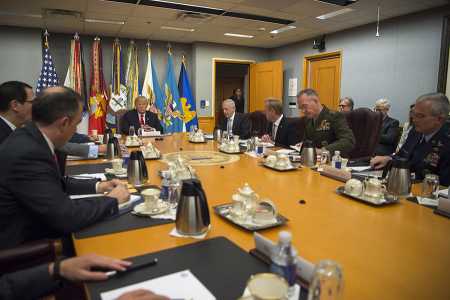 U.S. nuclear weapons were designed in the 1970s and built in the 1980s and 1990s. Almost all are undergoing or will soon undergo what are known as life extension programs (LEPs). Congress has provided funding for these programs, and initial Trump budgets have shown strong support for these as well. Some of these LEPs involve minor updates and refurbishment, and some are complete renovations of existing weapons inside old containers. All result in weapons that are safe and reliable and can be expected to remain so for many decades.
U.S. nuclear weapons were designed in the 1970s and built in the 1980s and 1990s. Almost all are undergoing or will soon undergo what are known as life extension programs (LEPs). Congress has provided funding for these programs, and initial Trump budgets have shown strong support for these as well. Some of these LEPs involve minor updates and refurbishment, and some are complete renovations of existing weapons inside old containers. All result in weapons that are safe and reliable and can be expected to remain so for many decades.
Yet, there are growing concerns among some in the policy and technical communities that the age of U.S. weapons impose an excessive cost and has strategic implications. The worry is that, as these weapons age, Russia or some other adversary may see them as less reliable and that perception will make U.S. defense commitments to allies more difficult to fulfill. If this is the case, producing new weapons would provide a greater deterrent effect vis-á-vis Russia and others and be more reassuring to allies.
There is no evidence to back up this argument, but it also cannot be disproven. Since the United States conducted its last underground nuclear test explosion in 1992, the U.S. national laboratories have certified that their science-based stewardship programs have been able to ensure that U.S. nuclear weapons remain safe, secure, and effective. At the same time, the laboratories responsible for designing and maintaining nuclear weapons have struggled to attract and retain the necessary experts, often competing with Silicon Valley, and have argued that enabling scientists to design new weapons or at least conduct new weapons research would be helpful to maintaining a range of nuclear capacities.
These arguments have been around for a long time, ever since the end of the Cold War. Under Obama, because there was not a need to pursue the development of new weapons to ensure the nuclear deterrent, technical interest in some quarters to design and develop new weapons was not seen as a priority. Unbound by such considerations, as evidenced by Trump’s statements that if there is to be an arms race, let there be an arms race,8 the new NPR may authorize the laboratories to undertake design work on new weapons, possibly even for new missions.
Smaller Nuclear Weapons
For U.S. deterrent and nuclear reassurance statements to be credible, allies and potential adversaries must believe that the United States is prepared to use its nuclear weapons to deny an adversary the objective it seeks or to raise the costs of achieving that objective to the point where it is unappealing.
Some experts and analysts, including some now in the Trump administration, have maintained that because most but not all U.S. nuclear warheads are quite large by nuclear standards—some 10 to 20 times the size of the weapons dropped on Hiroshima and Nagasaki—they are too large for any threatened use to be credible. Under that argument, an adversary could convince itself that the United States will be self-deterred from using nuclear weapons because of the collateral damage to civilians and the environment.
If that is seen as a problem, the solution proposed by some is U.S. development of smaller, more usable nuclear weapons.9 Options include development of a new tactical nuclear weapon or modifications to existing strategic weapons that would produce a much smaller detonation than they were originally designed to produce. The prospect that Trump would support the development of such weapons is uncertain, but may be included at least as an aspiration in the NPR.
To be clear, there is no evidence from direct engagement with U.S. allies or countries such as Russia or China that proves or even strongly indicates that the size of U.S. nuclear weapons is seen as undermining U.S. deterrence or reassurance commitments. For the most part, this is a debate inside the U.S. nuclear security and military community that worries that a president might be self-deterred from using nuclear weapons for fear of collateral damage or other legal or moral considerations. It remains to be seen if the Trump NPR will seek such weapons, perhaps using such justification. It is not evident that there is a self-deterrent problem with the U.S. nuclear arsenal that requires a nuclear solution along these lines. Moreover, any such move is likely to replay the alarm during the 2000s that the president is eager to have and possibly employ nuclear weapons, a perception that would weaken strategic stability and undermine U.S. nonproliferation efforts.
Nuclear Modernization
All indications are that modernizing U.S. nuclear forces remains the Pentagon’s top priority for the NPR. The United States is in early stages of research and development of replacements for its current nuclear arsenal. Most of the delivery systems—land-based missiles, ballistic missile submarines, and long-range aircraft—are nearing the end of their lifecycles.
Under Obama, it was decided that the United States would pursue replacements for all three legs of the nuclear triad while investing resources to ensure that the National Nuclear Security Administration (NNSA) and its laboratories, which maintain and monitor U.S. nuclear weapons, have what they need to keep U.S. weapons safe, secure, and effective. As these programs took shape, it became clear that the cost associated with a full-scale modernization of all three legs at the same time was a fiscal challenge, and a debate began about how to cover the costs along with the other demands associated with conventional military modernization.
Clearly, the costs associated with the nuclear modernization program are skyrocketing. An original outside estimate that the programs might cost $1 trillion over 30 years now appears to significantly underestimate the costs. The true costs could be 50 to 100 percent higher once all associated cost increases and programs are included. There is no way these programs will be sustainable if buying them means the U.S. military cannot also afford new fighter aircraft, surface ships, and advanced conventional capabilities needed to support broad U.S. defense requirements.
Thus, one issue the NPR needs to address is the intersection of policy requirements and budget resources. It would be the height of irresponsibility for the administration to call for continuing or expanding nuclear programs without explaining how these costs will be covered. Many options to adjust the pace and composition of future nuclear forces exist and need to be evaluated. These include delaying some programs, such as the new Ground-Based Strategic Deterrent designed to replace the Minuteman III intercontinental ballistic missiles, while possibly eliminating others. One prime candidate for elimination is the nuclear long-range standoff cruise missile.10 The NPR likely will not end or slow down these programs. In fact, it is possible the NPR will seek to accelerate their development. Yet, it will be critical that the NPR and Defense Department explain the costs of these programs and how they will be funded in a constrained budget environment.
Negative Security Assurances and Sole Purpose
The Obama administration took as a starting point in its review the concept that the United States should continue its tradition of only assigning to nuclear weapons the minimum roles necessary to ensure U.S. security and that of allies. The more that the role of nuclear weapons is reduced, the more credible U.S. strategy becomes and the greater the ability to achieve good security and nonproliferation outcomes.
 Past administrations considered nuclear weapons suitable for all manner of security and military threats from terrorism to cyberspace. Obama and his national security team, however, narrowed the scope. To do so, the Obama team put real money, effort, and priority behind enhancing the non-nuclear options for dealing with military requirements. The NPR Report states, “The United States will continue to strengthen conventional capabilities and reduce the role of nuclear weapons in deterring non-nuclear attacks, with the objective of making deterrence of nuclear attack on the United States or our allies and partners the sole purpose of U.S. nuclear weapons.”11
Past administrations considered nuclear weapons suitable for all manner of security and military threats from terrorism to cyberspace. Obama and his national security team, however, narrowed the scope. To do so, the Obama team put real money, effort, and priority behind enhancing the non-nuclear options for dealing with military requirements. The NPR Report states, “The United States will continue to strengthen conventional capabilities and reduce the role of nuclear weapons in deterring non-nuclear attacks, with the objective of making deterrence of nuclear attack on the United States or our allies and partners the sole purpose of U.S. nuclear weapons.”11
They took the view that to have and retain political and moral leadership in the effort to confront Iran’s nuclear program, it was important to reduce the number and role of nuclear weapons to the lowest level consistent with national security requirements. This was not seen as a favor to any other country or constituency, but rather to ensure that the United States was acting consistently with a desire to reduce the risks of nuclear use and to support the global nonproliferation and disarmament system.
These policies focus on two groups of states: those with nuclear weapons and those without nuclear weapons. For those countries with nuclear weapons, the NPR Report stopped short of declaring deterrence as the “sole purpose,” as arms control and disarmament advocates sought.
[T]here remains a narrow range of contingencies in which U.S. nuclear weapons may still play a role in deterring a conventional or [chemical or biological weapons] attack against the United States or its allies and partners. The United States is therefore not prepared at the present time to adopt a universal policy that deterring nuclear attack is the sole purpose of nuclear weapons, but will work to establish conditions under which such a policy could be safely adopted.12
Trump has not tipped his hand about when and against whom he might consider using nuclear weapons, although he has threatened North Korea with either a U.S. first-strike or nuclear retaliation if it strikes the United States, its territories (Guam), South Korea, or Japan. He also said during the campaign that he would not rule anything out, including the first use of nuclear weapons in Europe and elsewhere.13
 To be sure, many of these issues are influenced by Russia’s stated willingness to use nuclear weapons to escalate its way out of a failing conventional conflict. Russian defense strategists have discussed scenarios in which Moscow launches early, limited first use of tactical nuclear weapons in Europe to offset NATO’s conventional weapons superiority and force NATO to back off to avoid the even greater destruction of a full nuclear war.14
To be sure, many of these issues are influenced by Russia’s stated willingness to use nuclear weapons to escalate its way out of a failing conventional conflict. Russian defense strategists have discussed scenarios in which Moscow launches early, limited first use of tactical nuclear weapons in Europe to offset NATO’s conventional weapons superiority and force NATO to back off to avoid the even greater destruction of a full nuclear war.14
U.S. General Paul Selva, vice chairman of the Joint Chiefs of Staff, told the House Armed Services Committee in March that “our adversaries started to articulate a doctrine of escalation to deescalate, and we have to account for in our nuclear doctrine what that means…as we look at an adversary that expresses in their rhetoric a willingness to use nuclear weapons.”15 Selva is one of the key officials involved in shaping the NPR.
For states that do not possess nuclear weapons and are in full compliance with their nuclear nonproliferation obligations, the Obama NPR was very clear. There are no military requirements for the United States to threaten the use of nuclear weapons against any state that does not have nuclear weapons, and threats to do so are arguably less than credible. The NPR Report set out parameters for providing negative security assurances to non-nuclear-weapon states that are party to the nuclear Nonproliferation Treaty and in compliance with their nuclear nonproliferation obligations.
[T]he United States affirms that any state eligible for the assurance that uses [chemical or biological weapons] against the United States or its allies and partners would face the prospect of a devastating conventional military response—and that any individuals responsible for the attack, whether national leaders or military commanders, would be held fully accountable. Given the catastrophic potential of biological weapons and the rapid pace of bio-technology development, the United States reserves the right to make any adjustment in the assurance that may be warranted by the evolution and proliferation of the biological weapons threat and U.S. capacities to counter that threat.
In the case of countries not covered by this assurance—states that possess nuclear weapons and states not in compliance with their nuclear nonproliferation obligations—there remains a narrow range of contingencies in which U.S. nuclear weapons may still play a role in deterring a conventional or [chemical or biological weapons] attack against the United States or its allies and partners.16
Outlook
Having worked to build and maintain the taboo on nuclear use for 70-plus years, the United States has every reason to seek its maintenance. The NPR Report language in this context will be critical, as will be the underlying policy choices. It remains unclear, however, how the NPR will balance traditional U.S. restraint when it comes to nuclear policies and the president’s own thinking and his strong desire to distinguish himself from Obama’s policies on all issues.
In the end, Trump will have to determine, drawing on input from his cabinet and national security team, any changes in nuclear weapons policy and how to frame those decisions in communicating to audiences at home and abroad. Some issues are ripe for support from both the left and the right in Congress, such as modernizing existing nuclear forces and ensuring the national laboratories have the skills and resources needed to monitor and keep the weapons safe, secure, and reliable.
Others, including pursuit of new nuclear weapons or broadening the conditions under which the president might use nuclear weapons, threatens to make nuclear policy yet another partisan battleground to the detriment of U.S. security policy and nonproliferation aspirations.
ENDNOTES
1 “Campaign Flashback: Trump’s 2016 Nuclear Weapons Stance,” NBC News, October 6, 2017, https://www.nbcnews.com/video/campaign-flashback-trump-s-2016-nuclear-weapons-stance-1064516163692.
2 Office of the Press Secretary, The White House, “Remarks by President Trump Before a Briefing on the Opioid Crisis,” August 8, 2017, https://www.whitehouse.gov/the-press-office/2017/08/08/remarks-president-trump-briefing-opioid-crisis.
3 David E. Sanger and Maggie Haberman, “Transcript: Donald Trump on NATO, Turkey’s Coup Attempt and the World,” The New York Times, July 21, 2016.
4 Peter Baker and Cecilia Kang, “Trump Threatens NBC Over Nuclear Weapons Report,” The New York Times, October 11, 2017.
5 Office of the Press Secretary, The White House, “Remarks by President Trump and Prime Minister Trudeau of Canada Before Bilateral Meeting,” October 11, 2017, https://www.whitehouse.gov/the-press-office/2017/10/11/remarks-president-trump-and-prime-minister-trudeau-canada-bilateral.
6 Office of the Press Secretary, The White House, “Remarks by President Barack Obama in Prague As Delivered,” April 5, 2009, https://obamawhitehouse.archives.gov/the-press-office/remarks-president-barack-obama-prague-delivered.
7 U.S. Department of Defense, “Nuclear Posture Review Report,” April 2010, https://www.defense.gov/Portals/1/features/defenseReviews/NPR/2010_Nuclear_Posture_Review_Report.pdf (hereinafter NPR Report).
8 “President-Elect Trump Calls for Nuclear Arms Race, Stunning Experts,” NBC News, December 23, 2016, https://www.nbcnews.com/nightly-news/video/president-elect-trump-calls-for-nuclear-arms-race-stunning-experts-840644675837.
9 Bryan Bender, “Trump Review Leans Toward Proposing Mini-Nuke,” Politico, September 9, 2017, http://www.politico.com/story/2017/09/09/trump-reviews-mini-nuke-242513.
10 Secretary of Defense Jim Mattis, who has described himself as undecided about the long-range standoff weapons system, said a decision “will come out of” the NPR. See Kingston Reif, “Air Force Nuclear Programs Advance,” Arms Control Today, October 2017, https://www.armscontrol.org/act/2017-10/news/air-force-nuclear-programs-advance.
11 NPR Report, p. ix.
12 Ibid., p. viii.
13 “Donald Trump Won’t Take Nuclear Weapons Off the Table,” Hardball With Chris Matthews, March 30, 2016, http://www.msnbc.com/hardball/watch/donald-trump-won-t-take-nukes-off-the-table-655471171934.
14 Anya Loukianova Fink, “The Evolving Russian Concept of Strategic Deterrence: Risks and Responses,” Arms Control Today, July/August 2017, https://www.armscontrol.org/act/2017-07/features/evolving-russian-concept-strategic-deterrence-risks-responses.
15 Rebecca Kheel, “Pentagon Starts Review of Nuclear Posture Ordered by Trump,” The Hill, April 17, 2017, http://thehill.com/policy/defense/329137-pentagon-official-starts-nuclear-posture-review.
16 NPR Report, p. 16.
Jon Wolfsthal served as a special assistant to the president and senior director for arms control and nonproliferation at the National Security Council in the Obama administration from 2014 to 2017. He is now senior adviser to Global Zero and director of the Nuclear Crisis Group. He is also a nonresident scholar at the Carnegie Endowment for International Peace and at the Belfer Center for Science and International Affairs at Harvard University’s Kennedy School of Government.
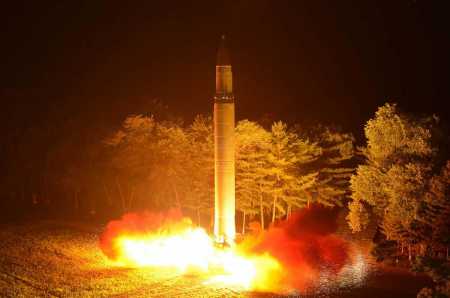 The risk of conflict through miscalculation by either side now may be as severe as during the tense days of October 1962, when the United States and the Soviet Union nearly went to war over the deployment of Soviet missiles in Cuba.
The risk of conflict through miscalculation by either side now may be as severe as during the tense days of October 1962, when the United States and the Soviet Union nearly went to war over the deployment of Soviet missiles in Cuba.





 He said he would be the “last to use” nuclear weapons,
He said he would be the “last to use” nuclear weapons, U.S. nuclear weapons were designed in the 1970s and built in the 1980s and 1990s. Almost all are undergoing or will soon undergo what are known as life extension programs (LEPs). Congress has provided funding for these programs, and initial Trump budgets have shown strong support for these as well. Some of these LEPs involve minor updates and refurbishment, and some are complete renovations of existing weapons inside old containers. All result in weapons that are safe and reliable and can be expected to remain so for many decades.
U.S. nuclear weapons were designed in the 1970s and built in the 1980s and 1990s. Almost all are undergoing or will soon undergo what are known as life extension programs (LEPs). Congress has provided funding for these programs, and initial Trump budgets have shown strong support for these as well. Some of these LEPs involve minor updates and refurbishment, and some are complete renovations of existing weapons inside old containers. All result in weapons that are safe and reliable and can be expected to remain so for many decades. Past administrations considered nuclear weapons suitable for all manner of security and military threats from terrorism to cyberspace. Obama and his national security team, however, narrowed the scope. To do so, the Obama team put real money, effort, and priority behind enhancing the non-nuclear options for dealing with military requirements. The NPR Report states, “The United States will continue to strengthen conventional capabilities and reduce the role of nuclear weapons in deterring non-nuclear attacks, with the objective of making deterrence of nuclear attack on the United States or our allies and partners the sole purpose of U.S. nuclear weapons.”
Past administrations considered nuclear weapons suitable for all manner of security and military threats from terrorism to cyberspace. Obama and his national security team, however, narrowed the scope. To do so, the Obama team put real money, effort, and priority behind enhancing the non-nuclear options for dealing with military requirements. The NPR Report states, “The United States will continue to strengthen conventional capabilities and reduce the role of nuclear weapons in deterring non-nuclear attacks, with the objective of making deterrence of nuclear attack on the United States or our allies and partners the sole purpose of U.S. nuclear weapons.” To be sure, many of these issues are influenced by Russia’s stated willingness to use nuclear weapons to escalate its way out of a failing conventional conflict. Russian defense strategists have discussed scenarios in which Moscow launches early, limited first use of tactical nuclear weapons in Europe to offset NATO’s conventional weapons superiority and force NATO to back off to avoid the even greater destruction of a full nuclear war.
To be sure, many of these issues are influenced by Russia’s stated willingness to use nuclear weapons to escalate its way out of a failing conventional conflict. Russian defense strategists have discussed scenarios in which Moscow launches early, limited first use of tactical nuclear weapons in Europe to offset NATO’s conventional weapons superiority and force NATO to back off to avoid the even greater destruction of a full nuclear war.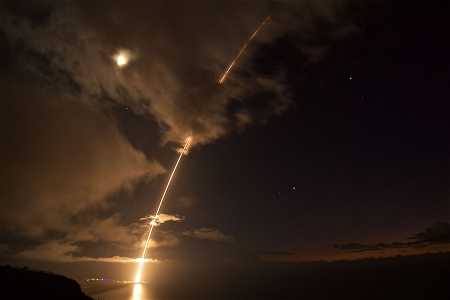 Incrementally, missile defenses, despite current technical limitations, haves acquired a genuine operational dimension for military planners and political leaders. Going forward, technological advances and business interests will make increased spending on such programs appealing, accelerating the development of systems designed to counter advanced offensive arsenals. The missile defense revolution may be taking shape slowly, but it is almost inevitable.
Incrementally, missile defenses, despite current technical limitations, haves acquired a genuine operational dimension for military planners and political leaders. Going forward, technological advances and business interests will make increased spending on such programs appealing, accelerating the development of systems designed to counter advanced offensive arsenals. The missile defense revolution may be taking shape slowly, but it is almost inevitable.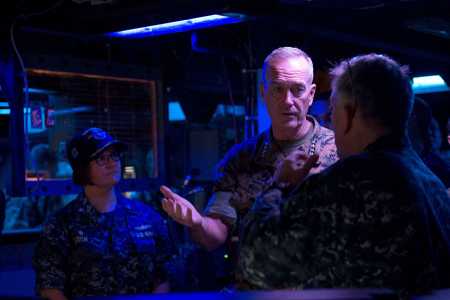 Progress was achieved on the theater systems while technical success was more elusive for new systems directed against key strategic threats, such as the emerging long-range missile capabilities of Iran and North Korea. Still, President George W. Bush’s declared goal in 2002 to deploy a homeland missile defense “within two years” did not reflect the actual performance of available technology, such as the Ground-Based Midcourse Defense (GMD) system. That system, which was fielded with untested prototype kill vehicles that suffered malfunctions, is an illustration of the dissonance between political and technological timelines. As of 2017, the GMD program has cost roughly $40 billion, and the Department of Defense assesses that the reliability and availability of the ground-based interceptor missiles remain low.
Progress was achieved on the theater systems while technical success was more elusive for new systems directed against key strategic threats, such as the emerging long-range missile capabilities of Iran and North Korea. Still, President George W. Bush’s declared goal in 2002 to deploy a homeland missile defense “within two years” did not reflect the actual performance of available technology, such as the Ground-Based Midcourse Defense (GMD) system. That system, which was fielded with untested prototype kill vehicles that suffered malfunctions, is an illustration of the dissonance between political and technological timelines. As of 2017, the GMD program has cost roughly $40 billion, and the Department of Defense assesses that the reliability and availability of the ground-based interceptor missiles remain low.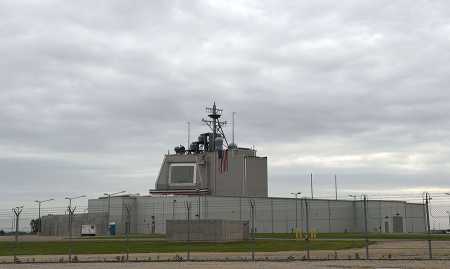 In theory, missile defenses coupled with continued investment in conventional long-range, precision-strike capabilities could help disable significant portions of an adversary’s arsenal during a first strike while complicating retaliation, with the consequence of increasing the risk of escalation to early use of nuclear weapons. Russian Foreign Minister Sergey Lavrov’s 2008 statement that “it is most likely that in the foreseeable future we will hear of hundreds and even thousands of interceptor missiles in various parts of the world, including Europe,”
In theory, missile defenses coupled with continued investment in conventional long-range, precision-strike capabilities could help disable significant portions of an adversary’s arsenal during a first strike while complicating retaliation, with the consequence of increasing the risk of escalation to early use of nuclear weapons. Russian Foreign Minister Sergey Lavrov’s 2008 statement that “it is most likely that in the foreseeable future we will hear of hundreds and even thousands of interceptor missiles in various parts of the world, including Europe,” Daniel Rietiker provides a thorough and timely review of humanitarian arms control agreements, with an eye toward the benefit of applying humanitarian values to the field of nuclear arms control as exemplified by the recent Treaty on the Prohibition of Nuclear Weapons.
Daniel Rietiker provides a thorough and timely review of humanitarian arms control agreements, with an eye toward the benefit of applying humanitarian values to the field of nuclear arms control as exemplified by the recent Treaty on the Prohibition of Nuclear Weapons. Halsted was hired as the first executive director of the Arms Control Association shortly after its founding in 1971. He established the organization's role as a key source of information and analysis on the nuclear arms control and nonproliferation and launched the Arms Control Association Newsletter, which would later become Arms Control Today (ACT).
Halsted was hired as the first executive director of the Arms Control Association shortly after its founding in 1971. He established the organization's role as a key source of information and analysis on the nuclear arms control and nonproliferation and launched the Arms Control Association Newsletter, which would later become Arms Control Today (ACT).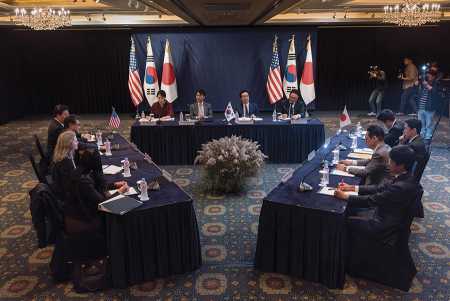 Continued confusion regarding U.S. policy toward North Korea comes ahead of Trump’s visit the region Nov. 3-13, which includes stops in South Korea, Japan, and China, and as North Korea downplays the chances for diplomacy with the United States after Trump insulted leader Kim Jong Un at the UN General Assembly in September. (See
Continued confusion regarding U.S. policy toward North Korea comes ahead of Trump’s visit the region Nov. 3-13, which includes stops in South Korea, Japan, and China, and as North Korea downplays the chances for diplomacy with the United States after Trump insulted leader Kim Jong Un at the UN General Assembly in September. (See 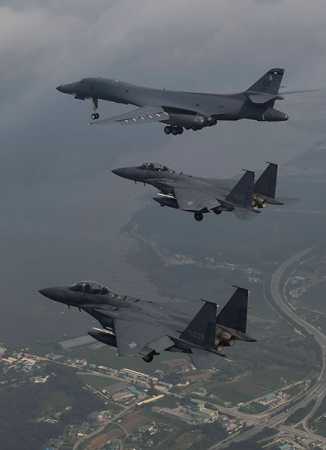 Trump has made comments in the past alluding to the use of military force or a preventative strike against North Korea’s missile capabilities. Sen. Chris Murphy (D-Conn.) said in an Oct. 11 interview with VOX that the president “has sent us very clear signals about his enthusiasm for military conflict with North Korea.”
Trump has made comments in the past alluding to the use of military force or a preventative strike against North Korea’s missile capabilities. Sen. Chris Murphy (D-Conn.) said in an Oct. 11 interview with VOX that the president “has sent us very clear signals about his enthusiasm for military conflict with North Korea.”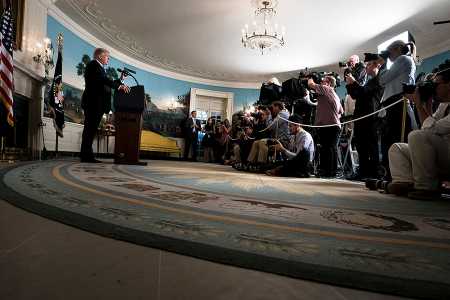 Trump also said he was withholding a quarterly certification to Congress tied to the nuclear deal on the grounds that sanctions relief provided to Iran was not proportionate to the restrictions on Tehran’s nuclear program. That was an expected step after Trump said in July that he was unlikely to issue the certification. (See
Trump also said he was withholding a quarterly certification to Congress tied to the nuclear deal on the grounds that sanctions relief provided to Iran was not proportionate to the restrictions on Tehran’s nuclear program. That was an expected step after Trump said in July that he was unlikely to issue the certification. (See 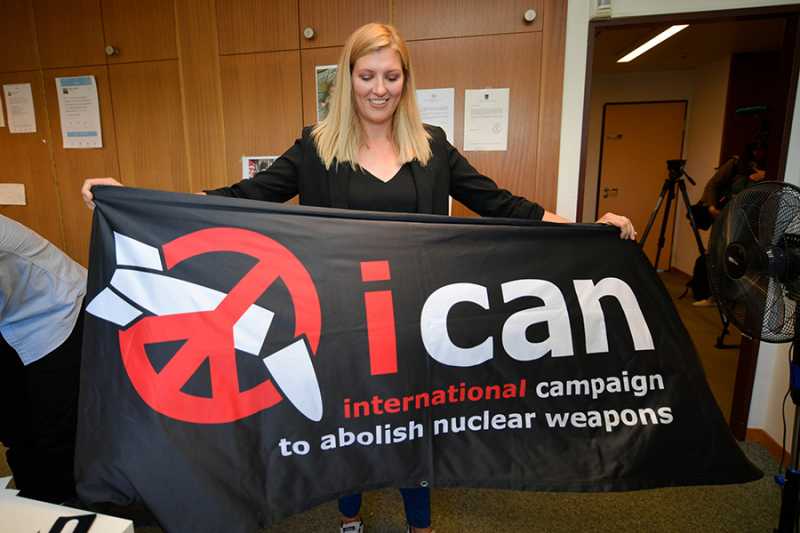 ICAN, a coalition of 468 nongovernmental organizations in more than 100 countries, has pushed for a legal ban on nuclear weapons for a decade. The organization was thanked repeatedly by leading negotiating states on the prohibition treaty for its persistent efforts to bring the accord to fruition, including by the chair of the negotiations in remarks following the treaty’s adoption July 7. (See
ICAN, a coalition of 468 nongovernmental organizations in more than 100 countries, has pushed for a legal ban on nuclear weapons for a decade. The organization was thanked repeatedly by leading negotiating states on the prohibition treaty for its persistent efforts to bring the accord to fruition, including by the chair of the negotiations in remarks following the treaty’s adoption July 7. (See 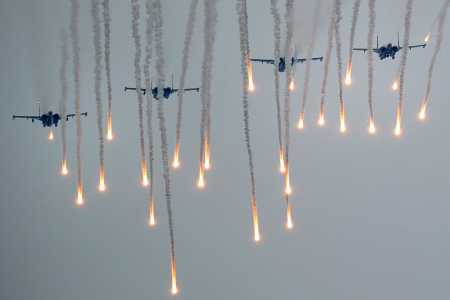 The September exercises occurred against the political backdrop of worsening relations between Russia and NATO countries since the 2014 Russian seizure of Crimea. Russia showcased integrated maneuvers, such as those seen in Crimea and Syria, as well as improved technologies involving drones and electronic warfare, demonstrating the transformation of its military over the past decade into a modern, sophisticated force capable of challenging NATO and the United States.
The September exercises occurred against the political backdrop of worsening relations between Russia and NATO countries since the 2014 Russian seizure of Crimea. Russia showcased integrated maneuvers, such as those seen in Crimea and Syria, as well as improved technologies involving drones and electronic warfare, demonstrating the transformation of its military over the past decade into a modern, sophisticated force capable of challenging NATO and the United States.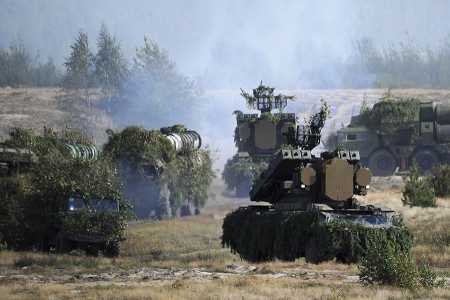 Zapad indicated a preparedness on the Russian side to raise the stakes in a conventional clash with NATO, meaning that NATO will need to evaluate whether it has the ability to maintain a deterrent with Moscow. The wake of the exercises could also bring attention to the possibility of renewing conventional arms control efforts between NATO and Russia.
Zapad indicated a preparedness on the Russian side to raise the stakes in a conventional clash with NATO, meaning that NATO will need to evaluate whether it has the ability to maintain a deterrent with Moscow. The wake of the exercises could also bring attention to the possibility of renewing conventional arms control efforts between NATO and Russia.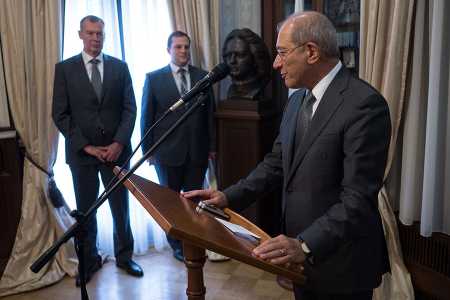 Russia was mandated under the 1993 Chemical Weapons Convention (CWC) to destroy its chemical weapons by 2007, although it received several extensions, most recently to 2020. Similarly, the United States originally had a 2007 deadline, which was pushed to 2012 and then 2023. (See
Russia was mandated under the 1993 Chemical Weapons Convention (CWC) to destroy its chemical weapons by 2007, although it received several extensions, most recently to 2020. Similarly, the United States originally had a 2007 deadline, which was pushed to 2012 and then 2023. (See